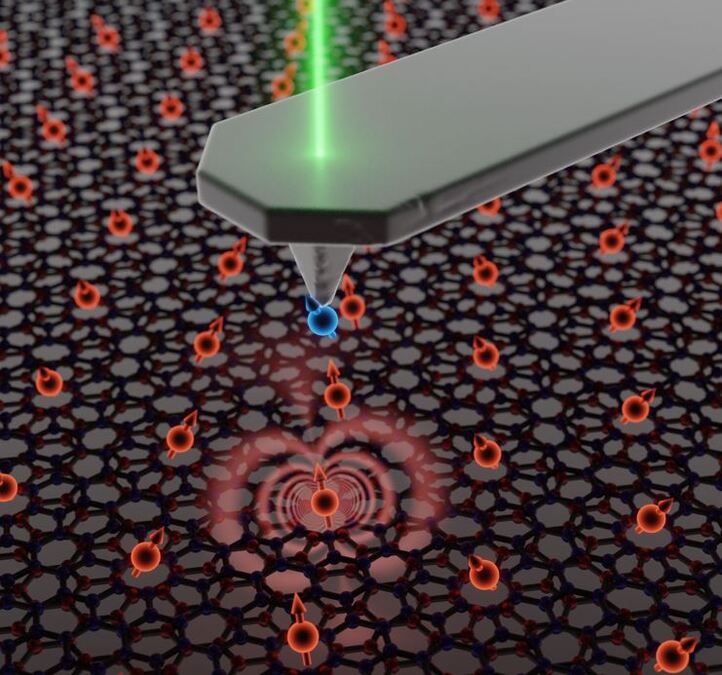Published:

In a UK-first, scientists at Heriot-Watt University are leading a new project to explore the mysterious properties of magnetism using a novel quantum sensor.
Researchers from Heriot-Watt's Institute of Photonics and Quantum Sciences (IPAQS) have been awarded £2million by the Engineering and Physical Sciences Research Council (EPSRC), part of UK Research and Innovation, to create a state-of-the-art Quantum Magnetometry Facility at the University's Edinburgh campus.
The facility will host a quantum magnetometer that is unique to the UK, and one of only a handful found anywhere in the world. The magnetometer exploits the magnetic properties of a single electron in diamond by using the rotation of the electron spin to detect magnetic fields. This highly accurate sensor can detect external magnetic fields from a sample with a resolution 10,000x smaller than the width of a human hair. The team will use this instrument to study magnetism in nano-materials at extremely low temperatures, close to absolute zero temperature - colder than outer space.
The project boosts Heriot-Watt's research on novel quantum materials made from just single sheets of atoms that offer new functionalities compared to traditional materials, such as silicon. The scientists hope their research could eventually lead to the development of new novel materials to build electronic devices with vastly improved memory storage and information processing capabilities.
Dr Cristian Bonato is principal investigator on the project and from Heriot-Watt's School of Engineering and Physical Sciences. He said: “This is an exciting opportunity to deploy a novel technique that the quantum technology community, including our own group, have been developing over the past decade. The great advantage of our magnetometer is that we can work in a large temperature range. So, we can go down to almost absolute zero and that is very important if we want to study the quantum behaviour of electrons in materials, which causes fascinating effects such as magnetism and superconductivity.
“The facility will be open for external users to access, and already more than ten groups from all across the UK have expressed interest in using it to investigate different types of novel materials.
“The instrument will be upgraded with unique “smart” capabilities developed by our lab, enabling it to self-optimise itself in real-time using machine learning techniques, to deliver higher sensitivity to magnetic fields.”
IPAQS carries out broad range of world-leading research in photonics, condensed matter physics and quantum sciences. The University has a celebrated background working in these fields and earlier this year was recognised with the highest honour available in UK higher education, the Queen's Anniversary Prize, for its work in the frontier science of photonics.
Professor Brian Gerardot from the School of Engineering and Physical Sciences, and co-investigator on the project, said: “The great advantage of materials that are atomically thin, beyond their own unique intrinsic properties, is that they can be stacked together without restriction to form entirely new materials not possible in nature. By engineering the way the layers are stacked together, for instance by choosing their relative angle, we can control the way particles such as electrons interact with each other. And these quantum interactions determine the magnetic, electrical, and optical properties of the material. Remarkably, we can combine non-magnetic layers together to make a new quantum material that is magnetic, almost like magic.
“We want to use the new quantum magnetometer to probe these particle interactions in the new materials we fabricate at HWU in our state-of-the-art cleanroom facility. Once we understand the fundamental behaviour of these particle interactions, we can engineer the properties for future devices.”
Heriot-Watt University has contributed £600,000 into the project, to purchase equipment and renovate a dedicated laboratory to host the Quantum Magnetometry Facility.
EPSRC Director for Research Base Jane Nicholson said: “The Quantum Magnetometry Facility will enable researchers to explore novel physics in a variety of different systems that are crucial to the development of new materials.
“The insights which it will make possible could contribute to the development of ‘beyond-silicon' electronic devices with greater capabilities than those currently in use.”
The Quantum Magnetometry Facility is expected to be fully operational in 2023.